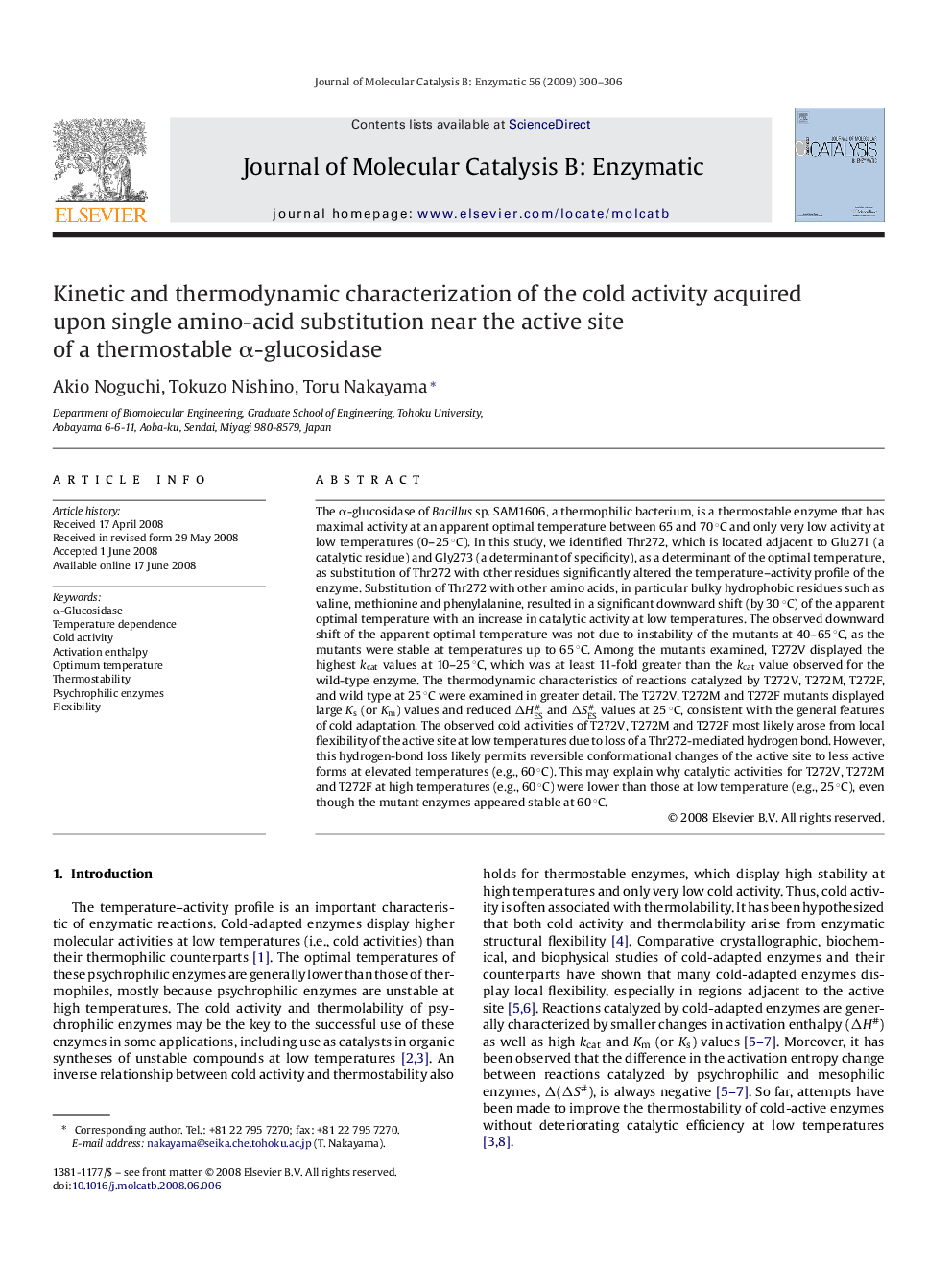| کد مقاله | کد نشریه | سال انتشار | مقاله انگلیسی | نسخه تمام متن |
|---|---|---|---|---|
| 70786 | 48846 | 2009 | 7 صفحه PDF | دانلود رایگان |

The α-glucosidase of Bacillus sp. SAM1606, a thermophilic bacterium, is a thermostable enzyme that has maximal activity at an apparent optimal temperature between 65 and 70 °C and only very low activity at low temperatures (0–25 °C). In this study, we identified Thr272, which is located adjacent to Glu271 (a catalytic residue) and Gly273 (a determinant of specificity), as a determinant of the optimal temperature, as substitution of Thr272 with other residues significantly altered the temperature–activity profile of the enzyme. Substitution of Thr272 with other amino acids, in particular bulky hydrophobic residues such as valine, methionine and phenylalanine, resulted in a significant downward shift (by 30 °C) of the apparent optimal temperature with an increase in catalytic activity at low temperatures. The observed downward shift of the apparent optimal temperature was not due to instability of the mutants at 40–65 °C, as the mutants were stable at temperatures up to 65 °C. Among the mutants examined, T272V displayed the highest kcat values at 10–25 °C, which was at least 11-fold greater than the kcat value observed for the wild-type enzyme. The thermodynamic characteristics of reactions catalyzed by T272V, T272M, T272F, and wild type at 25 °C were examined in greater detail. The T272V, T272M and T272F mutants displayed large Ks (or Km) values and reduced ΔHES# and ΔSES# values at 25 °C, consistent with the general features of cold adaptation. The observed cold activities of T272V, T272M and T272F most likely arose from local flexibility of the active site at low temperatures due to loss of a Thr272-mediated hydrogen bond. However, this hydrogen-bond loss likely permits reversible conformational changes of the active site to less active forms at elevated temperatures (e.g., 60 °C). This may explain why catalytic activities for T272V, T272M and T272F at high temperatures (e.g., 60 °C) were lower than those at low temperature (e.g., 25 °C), even though the mutant enzymes appeared stable at 60 °C.
Journal: Journal of Molecular Catalysis B: Enzymatic - Volume 56, Issue 4, April 2009, Pages 300–306